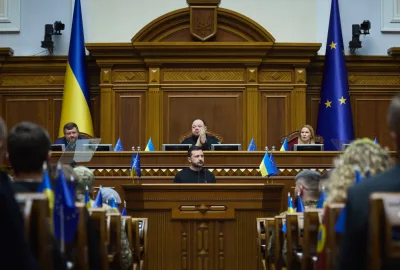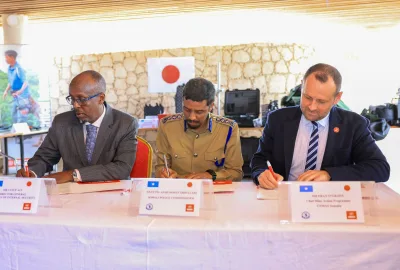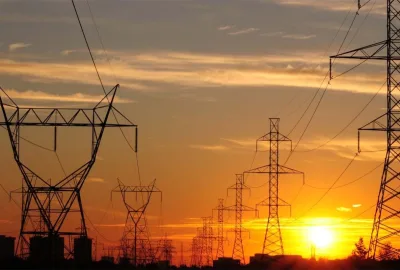By Abdiwahab M Ali Google search of “Somalis in Kenya” trawls files in 0.20 seconds, with…

By Abdiwahab M Ali
Google search of “Somalis in Kenya” trawls files in 0.20 seconds, with specific prompts of 1984 Wagalla Massacre of ethnic Somalis by Kenyan Security forces. A click on the pictures portal leads to an array of images aggregated for years. Elders still recall their pain, and their good fortune of having lived to tell their stories.
If ever there was a shrine of tears, to paraphrase the late Francis Imbuga’s novel, then it surely was that ghastly day.
The subsequent Kenyan leaders were almost all boorish with Somalis, here is script of President Jomo Kenyatt’s infamous 1964 statement, “To the people who live in North Eastern region (Somalis), I have this to say: We know that many of you are herdsmen during the day and shiftas (bandits) at night”.
Today, years later, Somalis(whether Kenyan Somalis or not ) are still suffering in Kenya, being hounded as suspected terrorists and flocked to Stadium Kasarani, a place human rights activists say is reminiscent of a concentration camp.
On the eve of April 2nd 2014, the first day of Usalama watch operation, while scrolling down my Facebook Account, I stumbled on a post from Faisal, a friend of mine in Turkey. His words were simple, “Somalis once called as proud as punch is now sunken and underfoot.” What followed that were pungent comments exchanged by his colleagues.
Still scrolling; an acquaintance shared a picture of a baby-bearing woman climbing up a paddy wagon, and her shining calves were out there. There is no surprise more magical than the surprise of seeing Somali women, once on a par with a camel and Geenyo Qurxoon, but now begging Kenyan soldiers to let her go. We deserve!
It was a picture that irritates and sears the heart and wraps around every Somali head shame and savagery. When such self-infliction shame happens after you have ruin your own country; expect the worst and it will be certainly come.
I should appreciate the premise that Somalis had destroyed their ancestral land and to the fact that some might have been coerced into nursing the perpetrators, but again, I will remind you that not all Somalis are terrorists — we can get several Kikuyus, Luhyas and even Luos listed on the terror list. The absurdity about our people is that no one feels upset at all about the dehumanising spectacles that we subject fellow Somalis, especially those that have been humiliated before. It is as if we revel in humiliation.
Last months’ explosion in Nairobi that triggered the profiling was blamed on the Somali community, even though no proof has been cited in this regard. The community has been stigmatized and portrayed as “terrorists” by the xenophobic description of the state, and other Kenyans psyched against them.
Should any other explosion crop up tomorrow, Heaven forbid, more than half of Kenyans may turn on the Somalis! I am not an alarmist but many prominent Kenyans are already forming that unfortunate impression.
Again, this brings us to Somali-Kenyans.
A Kenyan soldier was inquired by this query, “how do you distinguish who is actually Somali from Somalia?, his response was beyond belief: “They look alike, speak the same words, have curly hair, fair skin and most likely are in Somali costume, or I could judge them by one’s ability to speak Kiswahili and or English plus if they have Kenyan identity card.” What is missing from this soldier’s view is that there are millions of non-Somali Kenyans who can’t speak either language, and securing the ID is no big deal because all you need is-money.
Don’t bite the hand that feeds you
Back to the good old days, it has been clear that most Kenyans were immobile or without light in the years after independence but for the business acumen and adventurism of the Somalis, Kenyans were able to get services. Somalis not only delivered fuel into the interior of Kenya, they also opened businesses where few Kenyans would have dared to. They are credited with ascertaining the many small towns that make the Kenyan road network.
In other words, the Somalis initiated global commodities in many places in Kenya. The Somalis were pioneers and a harbinger of modernity in some parts of Kenya. And then, there was the renowned shopping mall in the part of Nairobi known as Eastleigh. But all the thankfulness was replaced by the illegal swoops, arbitrary arrests, profiling, screening, surveillance, and being called as aliens, foreigners and terrorists.
To most Somalis, the police exploitation in Eastleigh intends to disenfranchise the community economically by halting its main commercial hub. These assumptions matches with L. Muthoni Wanyeki’s recent article at the East African, “There are those whose livelihoods directly or indirectly depend on the Somali community, there are those have business rivalries with Somalis, all these issues needs to be noticed” .
In this respect, there is need for the Kenyan government to change the tune, re-examine its security strategies; and realize that the war against intimidation must be fought simultaneously with the war against corruption.
My message to Somalis is very loud and clear: Dear compatriots, there is no place like home, that is Mogadishu, Hargeysa, Bosassao and Kismayo where you all belong, not Nairobi and Eastliegh, A person travels the world, to quote George Moore’s masterpiece, “The Brook Kerith”, in search of what he needs and finally returns home to find it.
Abdiwahab M Ali is freelance writer and social commentator. He writes passionately about Somali Youth in the hope of giving them a voice.
Contact Mail: waberi444atgmaildotcom







